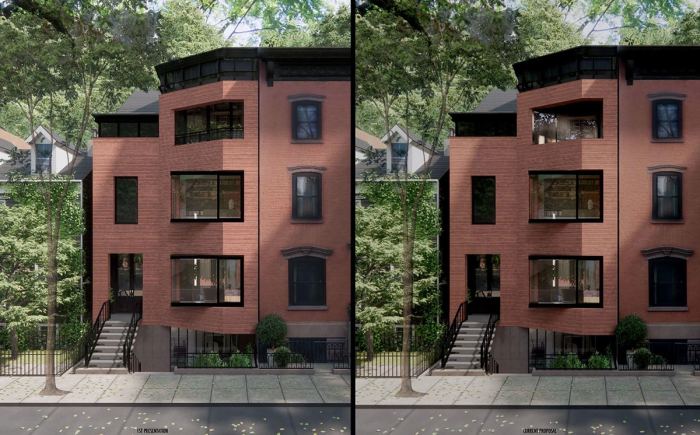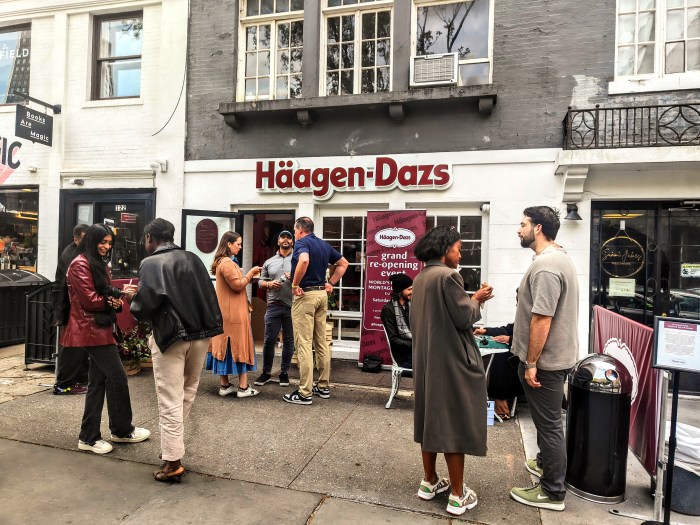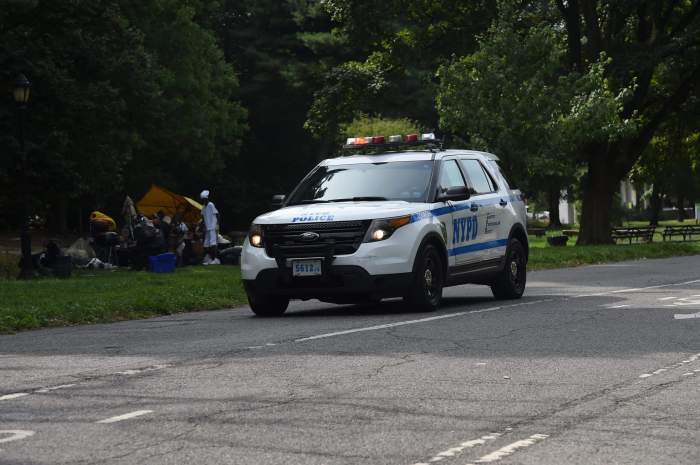City preservationists okayed renovations to the masonry arches supporting one end of the landmarked Brooklyn Bridge as part of a scheme that also proposes fixing up similar structures at the crossing’s opposite foot, as well as the two stone towers that rise above the span.
The Department of Transportation’s plan, which the Landmarks Preservation Commission approved on July 10, calls for restoring the roughly three-story arches beneath the bridge’s approach in Manhattan, which local wineries sealed off and used as storage facilities for decades following the span’s completion in 1883, but are now crumbling, with peeling paint and mismatched brickwork that has seen better days, according to transit officials.
The city’s plan calls for gutting most of the Italian Renaissance–style arches’ facades’ original masonry and putting up new exterior walls to cover their inner caverns, according to structural engineer Nicole Melendez, an employee of construction firm Parsons, which put together the restoration scheme in conjunction with the Transportation Department.
New exteriors need to replace the arches’ old facades since the walls will serve as useful load-bearing supports should an earthquake hit New York City, because without them a powerful tremor could potentially lead to a series destructive collapses, said Melendez, who presented the plan to the commission alongside transportation bigwigs.
“In a seismic event, it would effectively turn into a dominos if the walls weren’t there,” Melendez said.
The old arches’ facades’ massive windows, which the commission noted “seem only to increase the colossal size” of the structures when it landmarked the Brooklyn Bridge in 1967, however, will not be replaced in the new exterior walls, which will instead feature decorative louvers — a set of window-like slats that allow light to pass through.
And the rotting wood shutters on either side of the old facades’ windows will be swapped for weather-resistant steel variants that match their predecessors style, according to the plan.
All of the original material removed in the restoration will be catalogued and stored, according to a Transportation Department rep, who said the agency would work with local museums to display the ancient masonry — a pledge that failed to satisfy some of the preservationists, who lamented the bridge’s original elements that allegedly couldn’t be saved.
“It seems like were getting a facsimile of what was there before,” said one commissioner.
Following the commission’s sign off, work on the arches is expected to begin next March, and wrap in June 2022, according to Transportation Department spokeswoman Lolita Avila.
The renovation plan also calls for cosmetic enhancements to the arches that line the bridge’s Kings County approach, including cleaning and repointing the structures’ stonework, and similar repairs to the span’s 275-foot towers, where reinforcing bars will also be installed in the four Gothic-style arches to help secure the century-plus old architecture.
Those fixes, however, did not require a full-commission vote at the meeting, and have yet to be signed off on by agency administrators, according to a spokesman, who could not immediately say when they will be approved.
Elsewhere on the Brooklyn Bridge, the Transportation Department wants to expand its notoriously cramped pedestrian pathway to allow more people and cyclists to cross it daily, but has yet to submit that proposal to the landmarks commission, its spokesman said.
Avila could not immediately comment on the status of that project, but transit leaders said it would follow a two-year study of the Brooklyn Bridge’s steel suspension cables, kicking off this year, when they announced the pathway-expansion plan last December.























